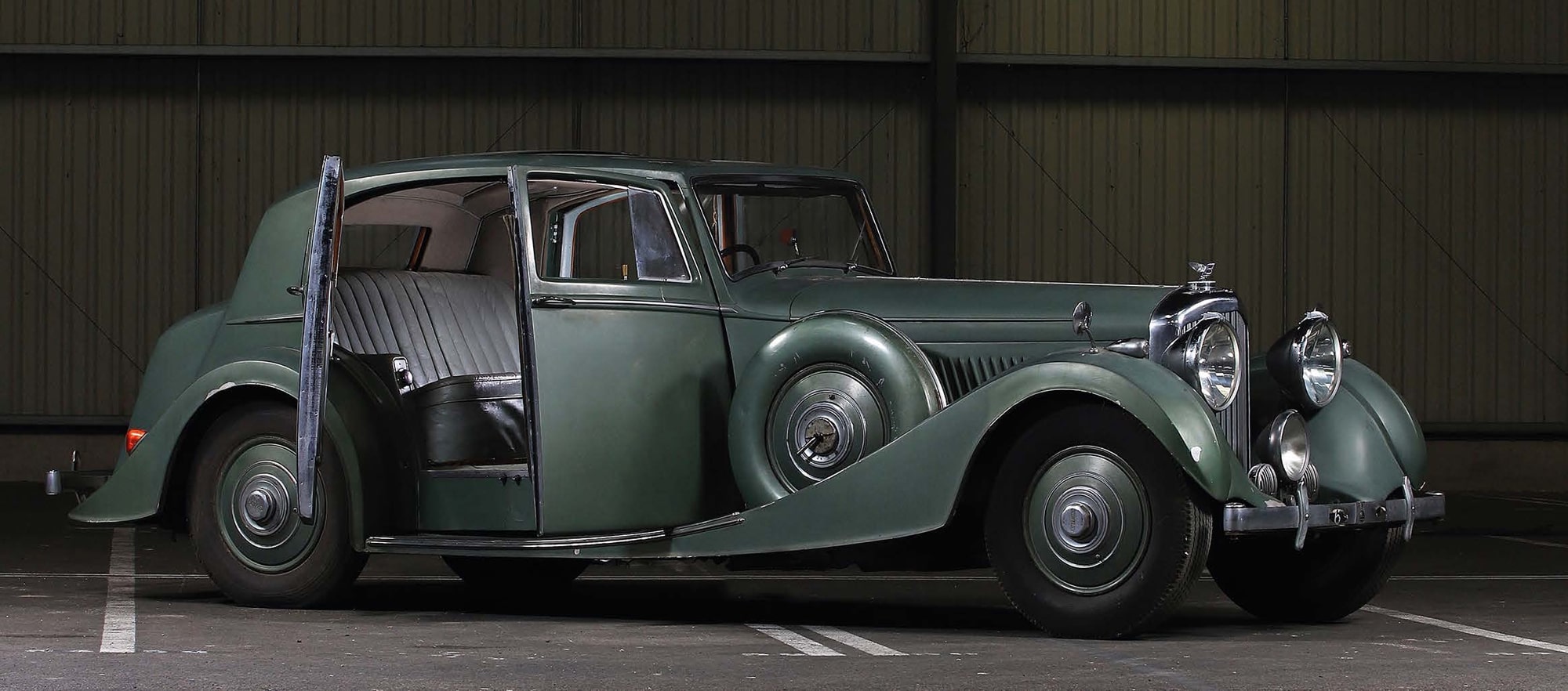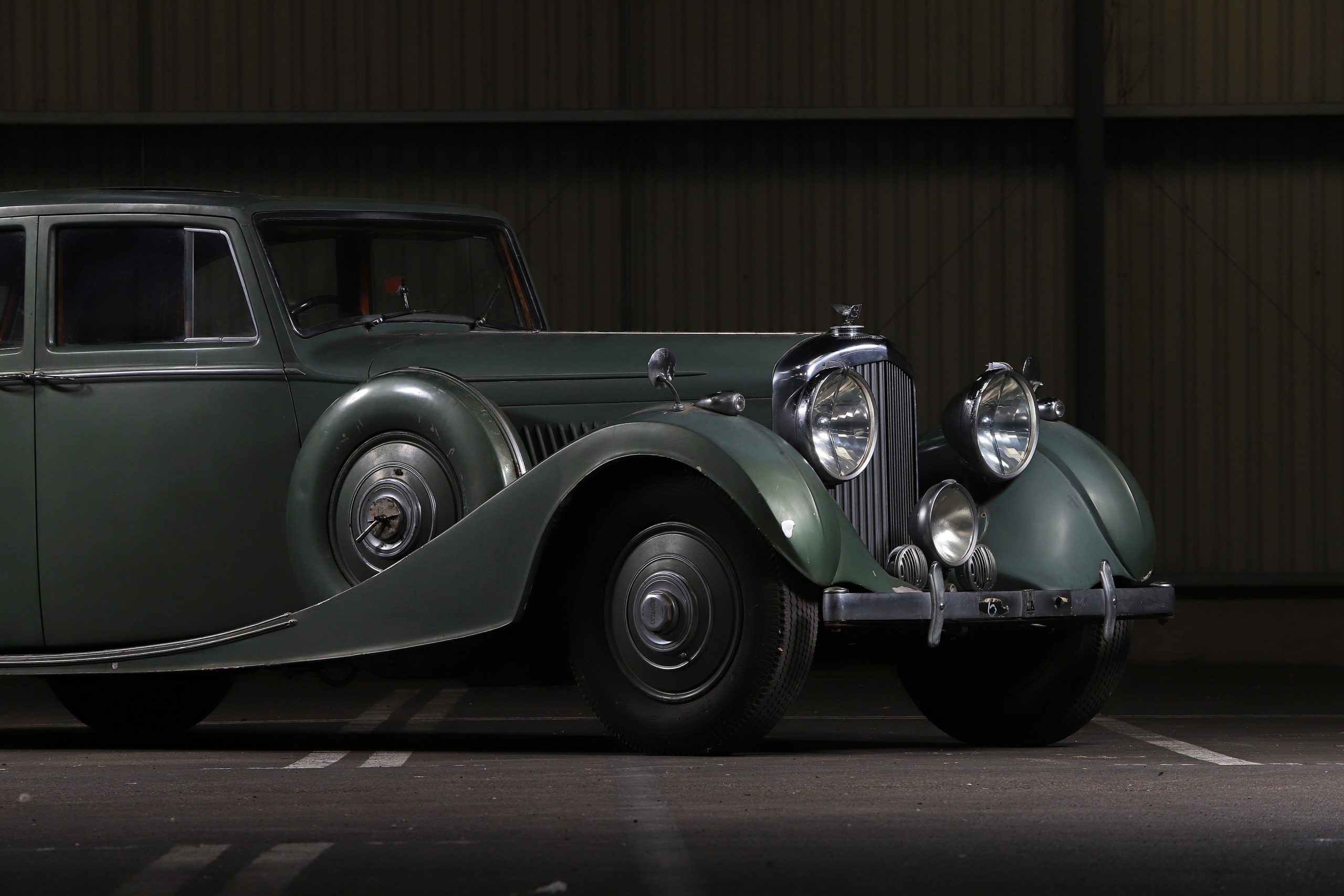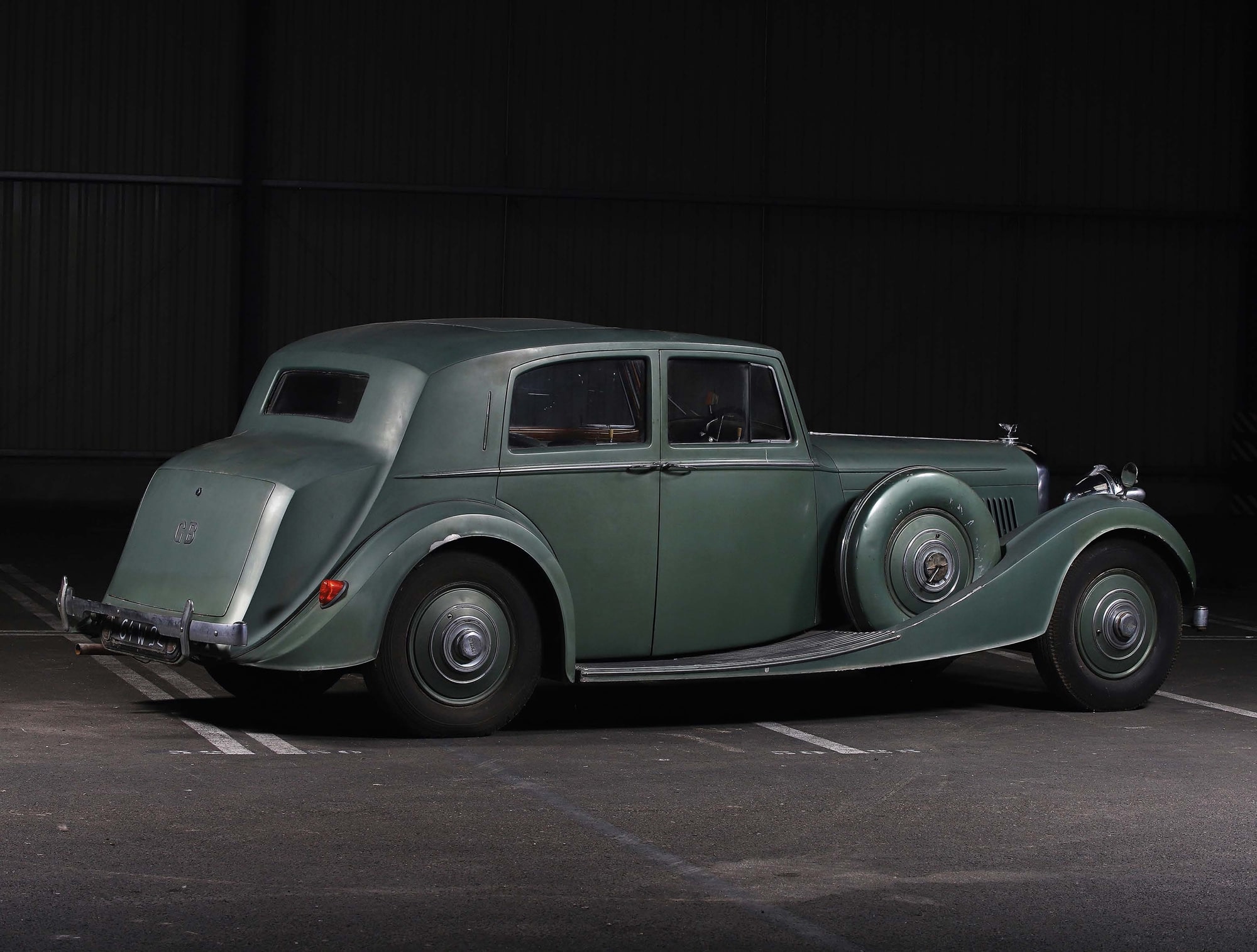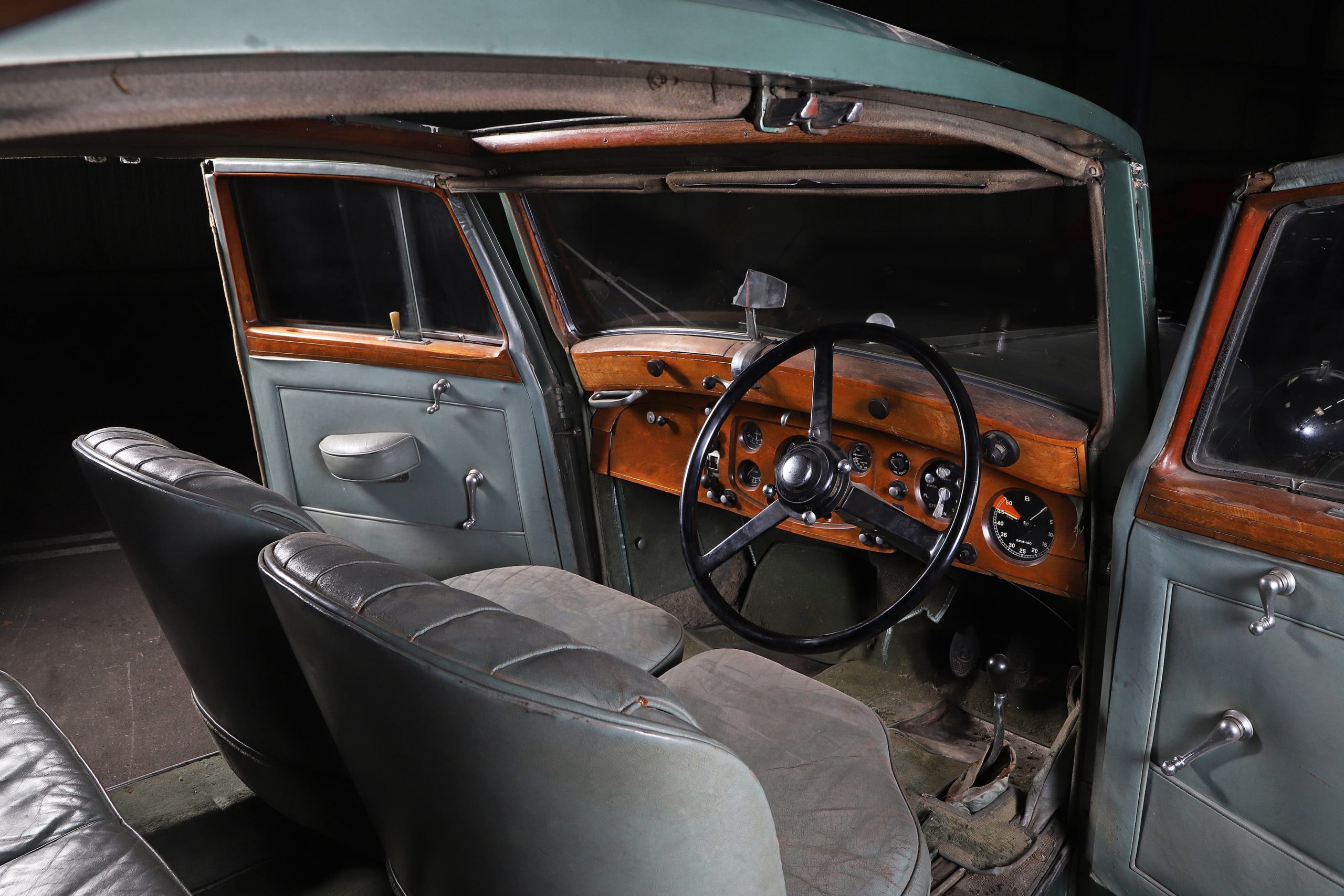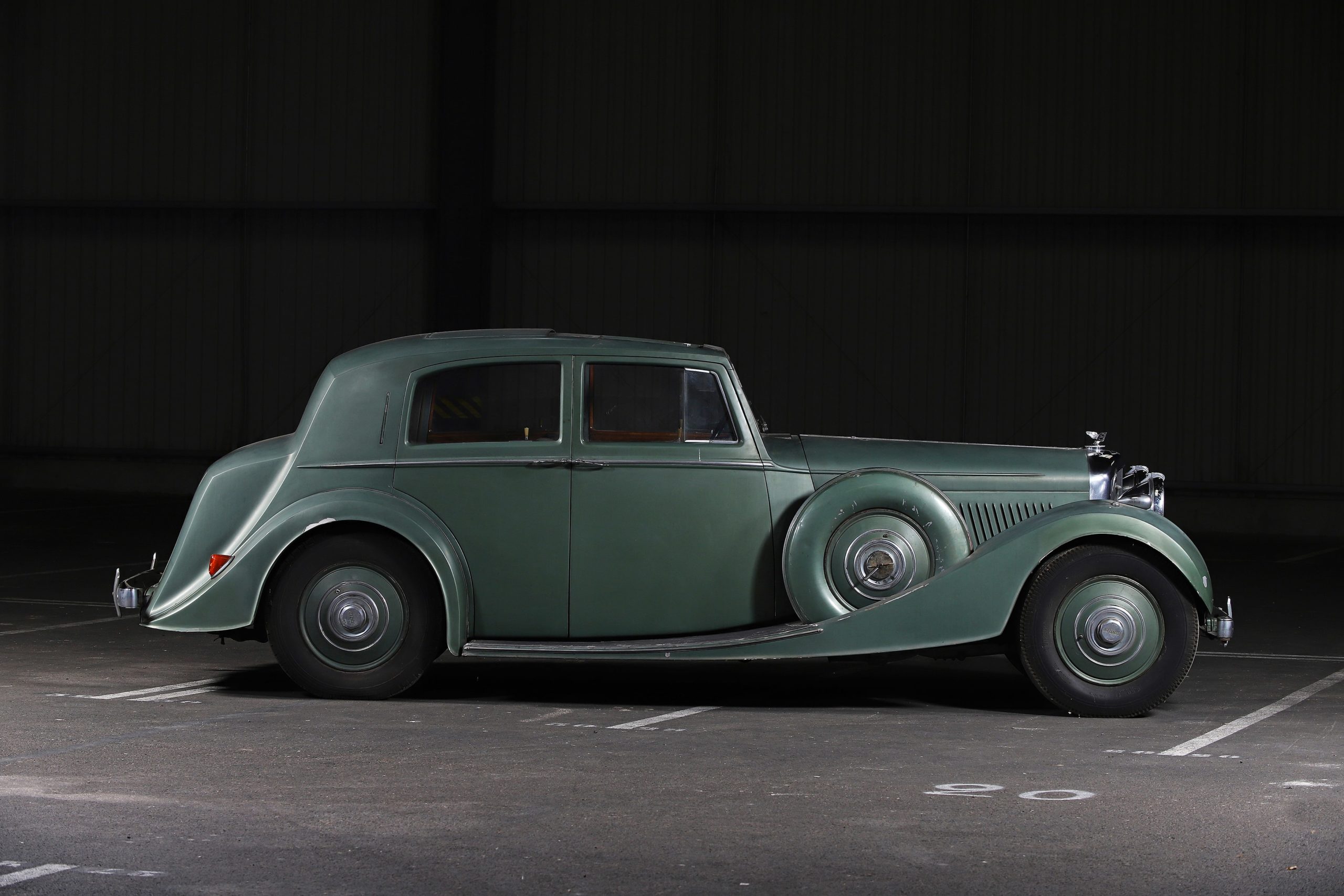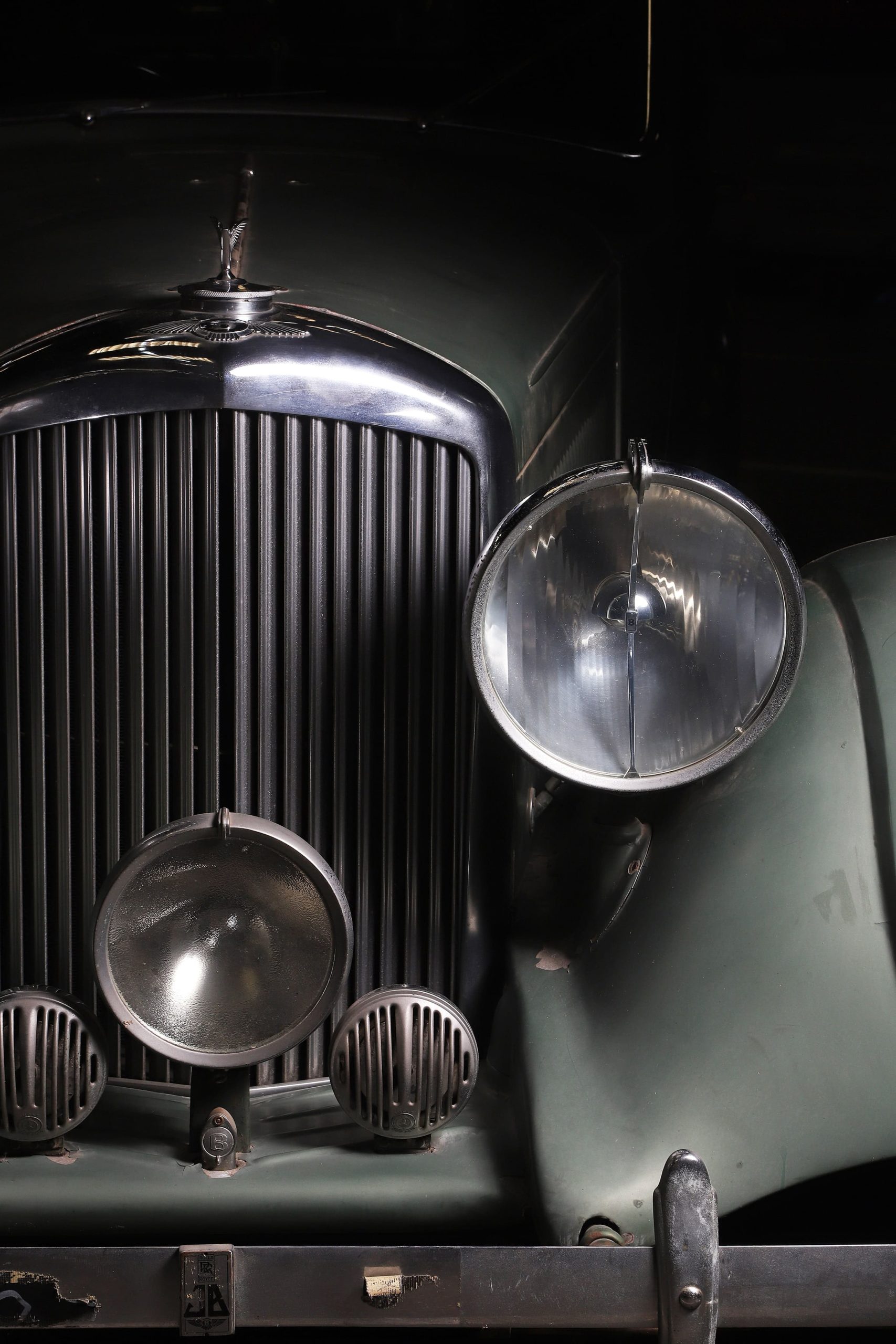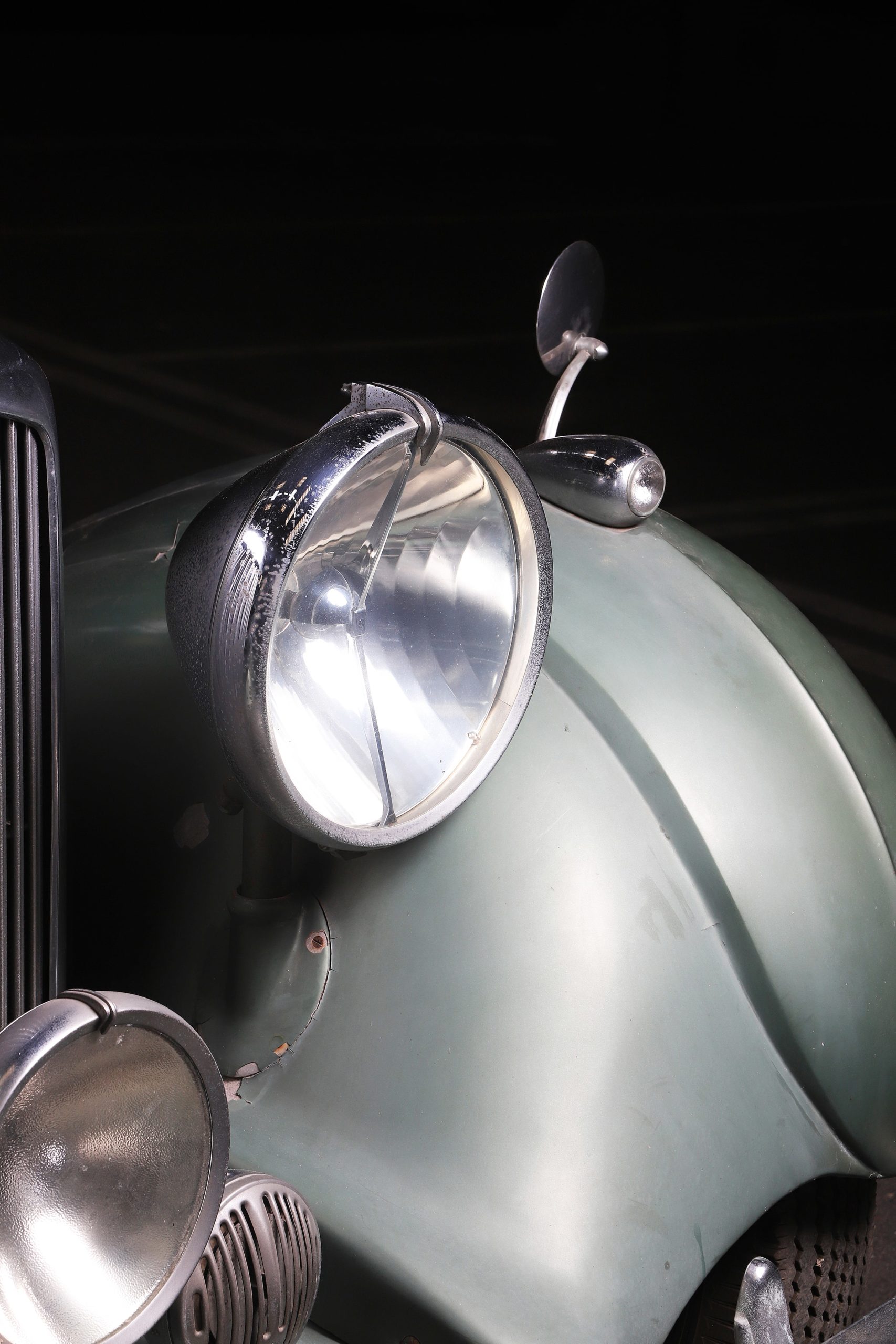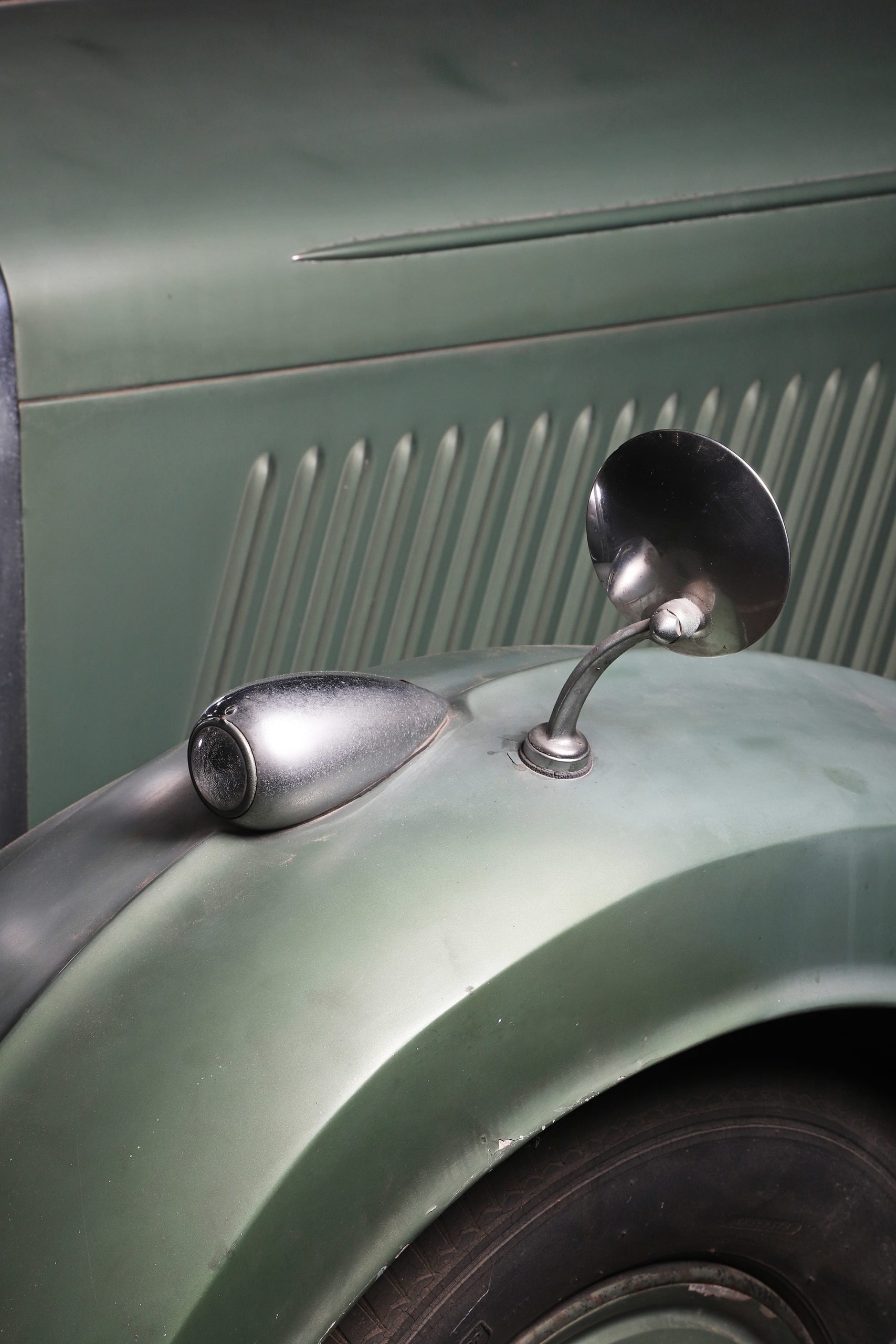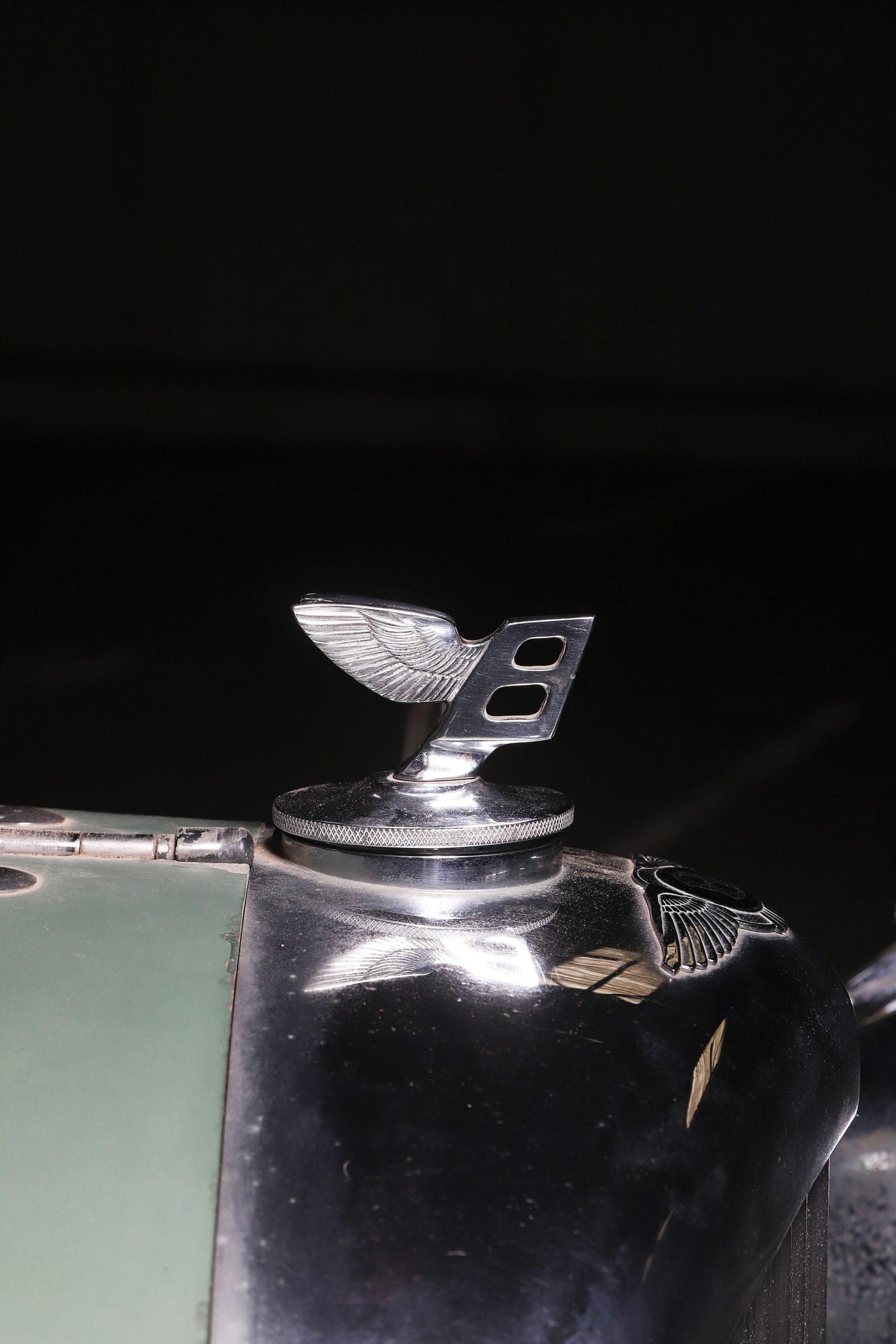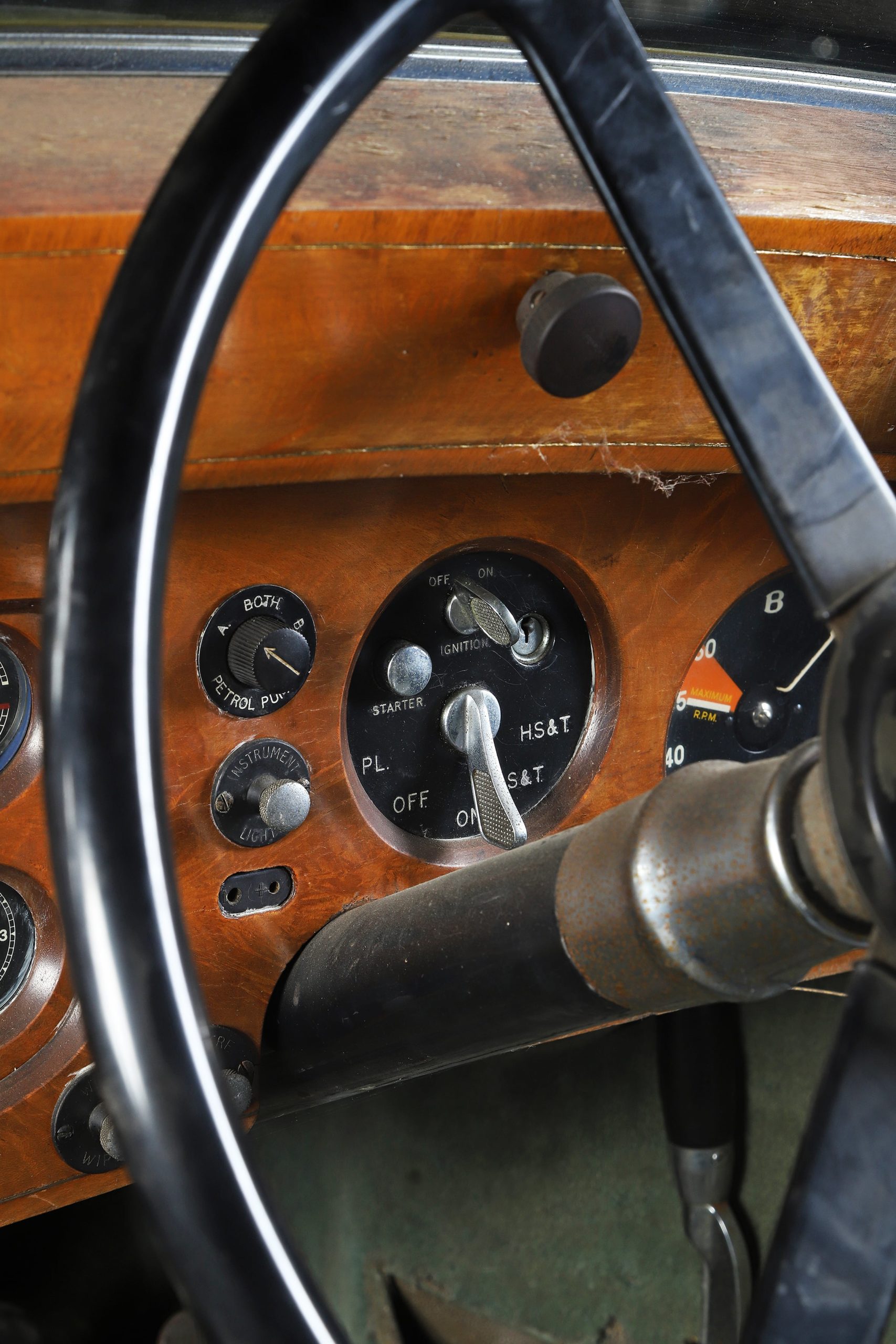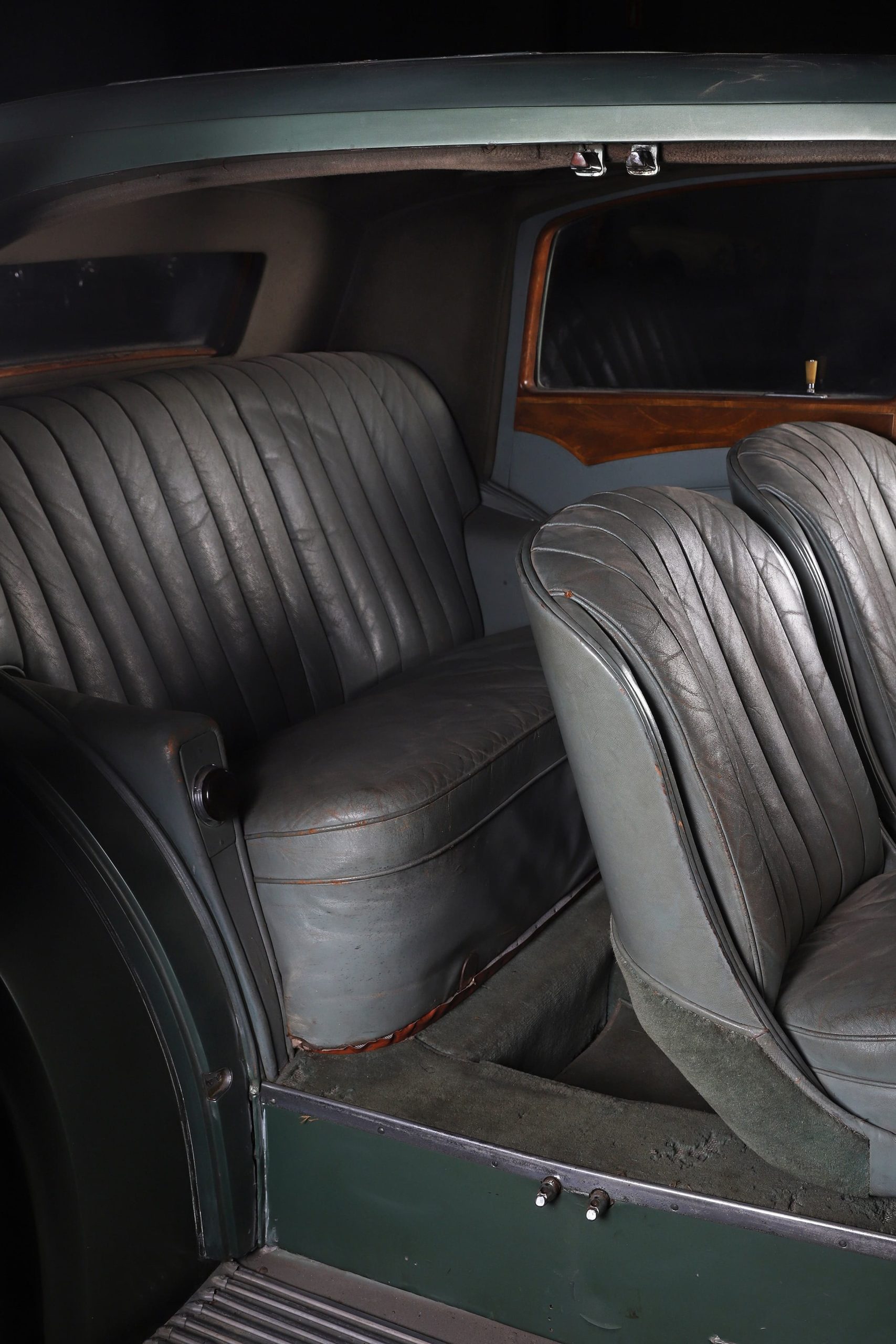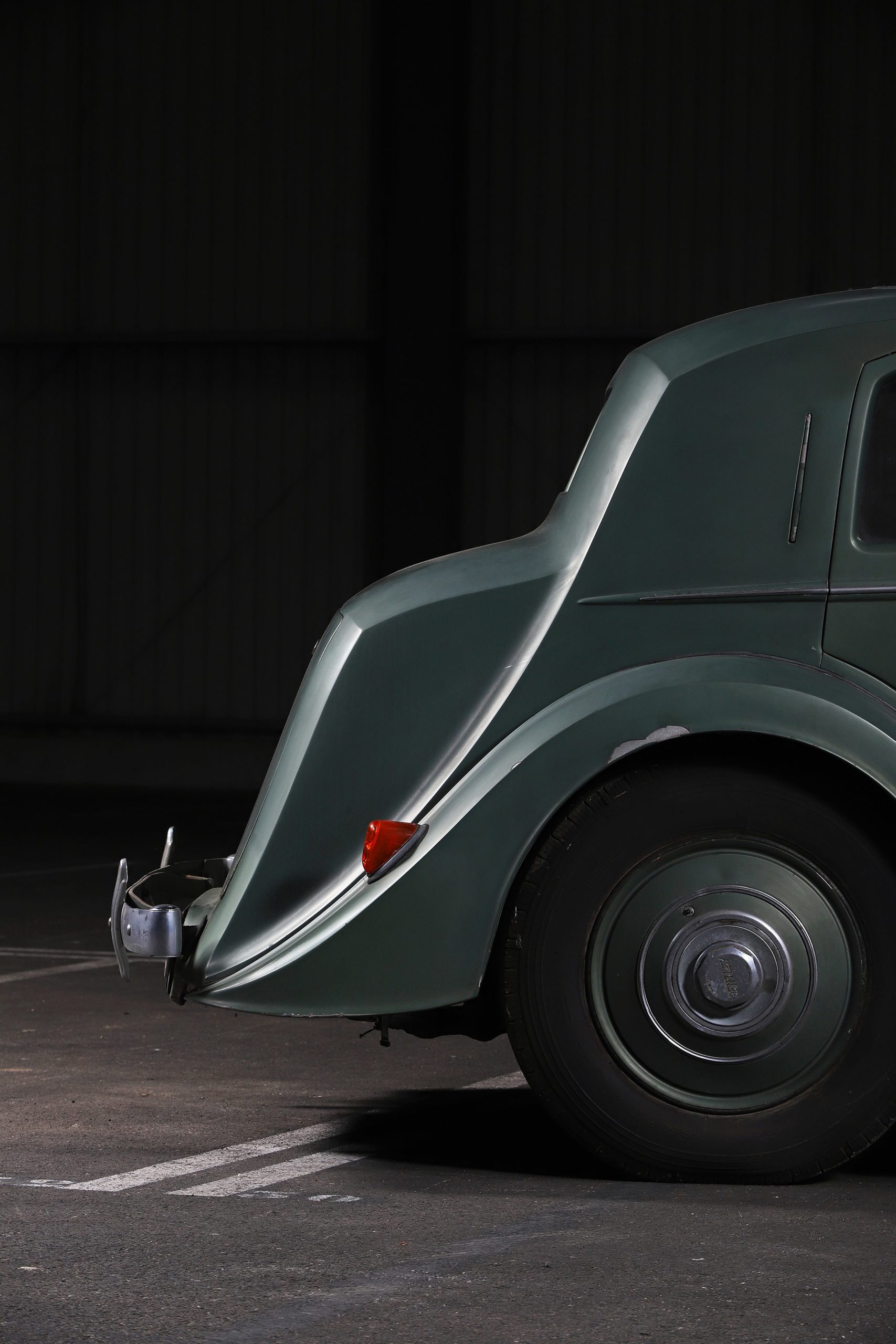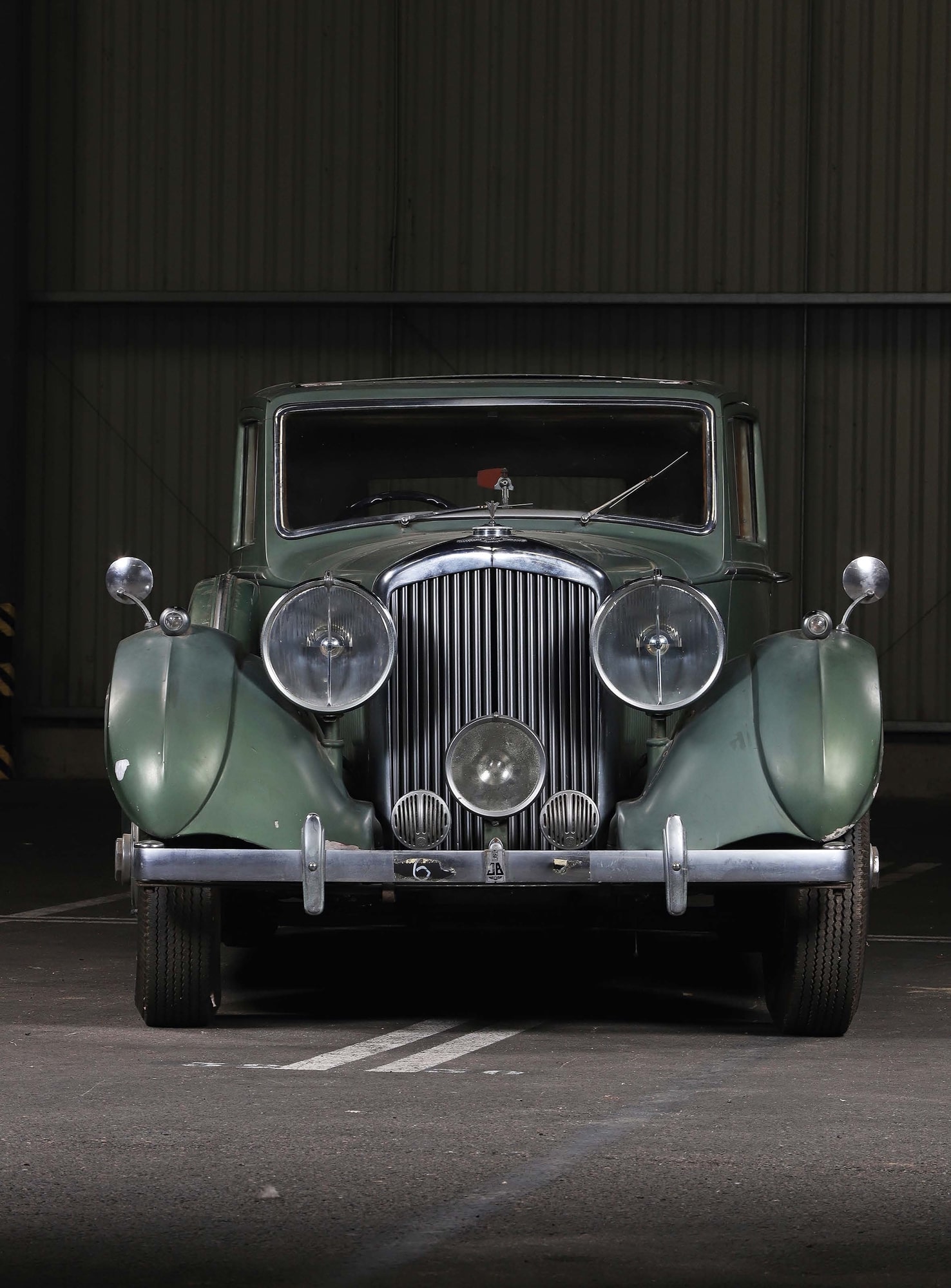BENTLEY 4 1/4 Continental Saloon - 1939
— The comfort of a Rolls Royce, the sportiness of a Bentley —- Model One of the Bentleys made under the Rolls Royce era, built at the Derby factory in 1939
- Rarity A very rare Pillarless Saloon by Mulliner with an aluminium bodywork
- Performance The fastest version of its time, dedicated to long distance, high speed journeys
- Patina With its green body and green leather interior, the car has a superb patina
- Options A car equipped with a sunroof, complete up to its original tool kit
In just a few years in the early 20s, WO Bentley managed to establish its brand as a benchmark for stylish and sporty cars, thanks in part to the legend of the Bentley Boys. Unfortunately, the brand was soon sold to its great rival Rolls Royce. The Bentley 4 ¼ called Derby is one of the fruits of this union.
A Derby Bentley, born during the Rolls Royce era
Created in 1921 by Walter Owen Bentley, the Bentley brand quickly acquired a fine reputation, first in the United Kingdom and soon Worldwide.
Quite a few gentlemen in search of a car with distinctive and sporting handling quickly adopted the first 3-litre model with its slim aluminium body. During the 1920s, Bentley gained a huge notoriety by winning the 24 Hours of Le Mans five times between 1924 and 1930, including four in a row from 1927 to 1930. These were the years of the Bentley Boys, a group of British gentlemen avid of sporting challenges, wild parties and pretty women. They were as famous as their cars. The myth was launched.
Despite such racing successes and the brand’s fame, Walter Owen (WO) Bentley found himself in such financial difficulty that he had to sell his brand to his great rival, Rolls-Royce.
Quickly after, the so-called Derby Bentleys were born. They were built in Derby, the Rolls-Royce factory, where the cars shared the same base as the Rolls Royce 20/25 and its excellent chassis. The Derby also inherited the Rolls Royce engine with a new cross-flow cylinder head, twin SU carburettors and twin fuel pumps.
Bentleys from this era were very elegant and comfortable cars, sold at a stiff price, making them almost like Rolls-Royces, with a slightly sportier character. Although W.O. Bentley himself carried out the development of the Derby on open roads and on Brooklands track, today’s Bentley collectors still like to distinguish the so-called ‘WO Bentley’ cars designed before the Derby era when the brand was taken over by Rolls Royce.
The ‘new’ 3½ Litre was launched during an economic recession that was unfavourable to luxury car sales. This prompted Rolls Royce to design a medium-sized car, capable of reaching 145km/h, which could be serviced by its owner. The car that Bentley liked to call “The Silent Sports Car“, thus combining the legendary silence of a Rolls Royce with the sportiness of a Bentley, was produced until 1936 at a rate of about 400 units per year, before being replaced by the famous 4¼ Litre.
The 4 1/4l fully embodied the philosophy of W.-O. Bentley himself: “There’s no replacement for displacement“. It also aimed to appeal to Bentley’s clientele, who demanded sportier cars.
In addition, during the 1930s, as the use of cars kept growing, the road network expanded, making it possible to drive on long journeys between European countries. Wealthy families no longer hesitated to use their cars to drive down to the Côte d’Azur, to a manor house in the countryside or to visit distant friends.
It was to appeal to this demanding clientele, as well as to Bentley’s first customers, that the 4¼ litre was launched. It could reach speeds in excess of 150 km/h, and even approaching 200 km/h for the Continental versions, which benefited from an increased compression ratio and fuel supply.
©Aguttes
An era of coachbuilders
As was the norm in the 1930s, Bentley sold its customers only the bare chassis with engine, running gear and grille, with the bodywork contracted to an external coachbuilder. This gave the customer a wide choice of styles and body types.
The Bentley Derby 4¼ Litre was produced in 1,234 examples between 1936 and 1939, replaced in 1940 by the Mk V. While Park Ward bodied the majority of the 4¼ Litre, Mulliner has made the ANNA LISA Art On Wheels collection’s Bentley, long before this coachbuilder came under the umbrella of Rolls-Royce and was merged with Park Ward.
©Aguttes
The Bentley from the ANNA LISA collection
The Bentley 4¼ Litre Mulliner from the ANNA LISA Art On Wheels collection is interesting in many ways. It has a very elegant saloon body with no central pillar, otherwise known as “pillarless”, with antagonistic doors.
Another interesting feature is that this car is made of aluminium, whereas most 4¼ Litre cars were made of steel, mainly because of the military context.
Our car has a very nice patina, barely glazed with a few paint chips, which contribute to its charm. The interior lined with green leather seems to be the original one.
